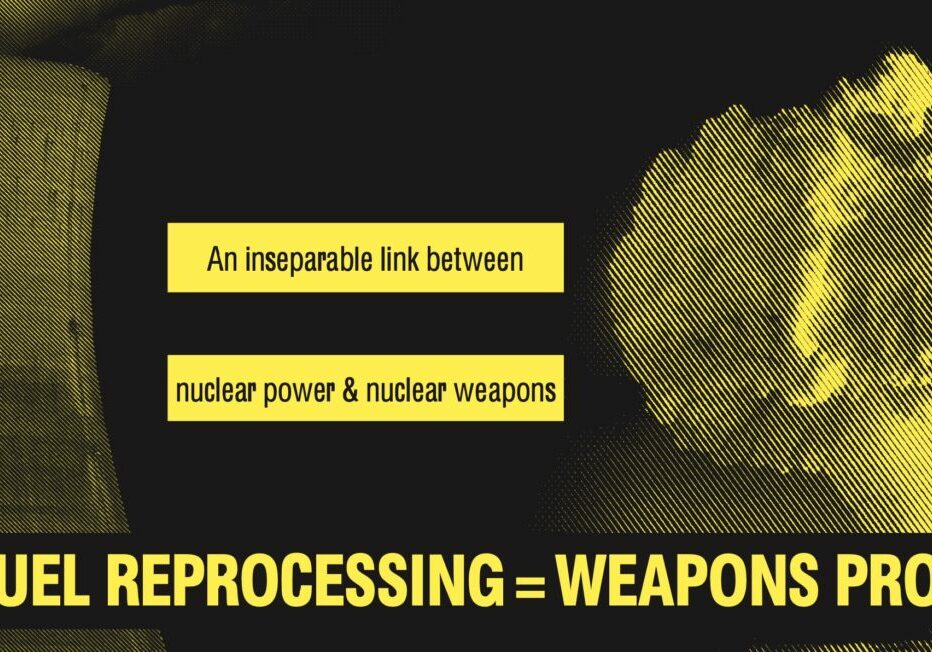Reprocessing– the dirty end of the nuclear fuel chain

Alongside uranium mining, reprocessing is considered the dirtiest phase of the uranium fuel chain. Reprocessing — the cutting up of irradiated reactor fuel rods in a chemical bath to extract plutonium and fissile uranium — releases larger volumes of radioactivity, typically by a factor of several thousand, than nuclear power plants. It also results in an enormous surplus of plutonium. A handful of European countries along with China, India, Pakistan, Russia, the USA, Japan and Israel, have at one time used reprocessing, with more than half of those facilities now closed.
The main bi-product of reprocessing is so-called low-level and intermediate-level wastes, misleading terms as these often contain long-lived radioactive isotopes.
For example, tens of millions of gallons of radioactively contaminated liquids are discharged annually into the English Channel from the French reprocessing facility at La Hague, while radioactive gases such as krypton, xenon and carbon-14 are released from the plant’s chimney stacks. In fact, La Hague is the biggest single emitter of carbon-14 in the world.
The liquid discharges from La Hague have been measured at 17 million times more radioactive than normal sea water. Concentrations of krypton-85 above the plant have bee registered at 90,000 times higher than natural background.
To understand more about reprocessing, see the Beyond Nuclear pamphlet on that topic.
Support Beyond Nuclear
Help to ensure a safer, greener and more just world for all

